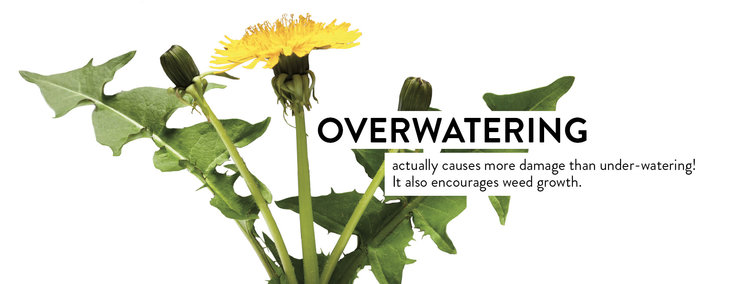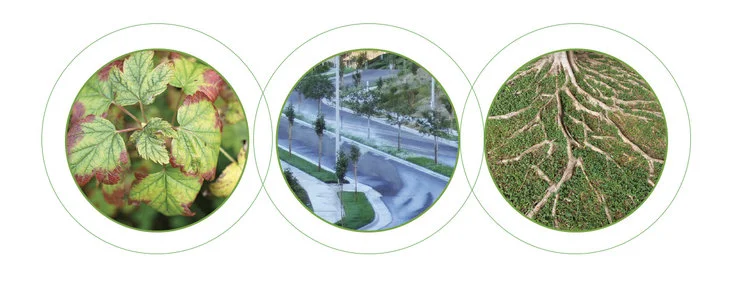What Causes the Most Problems in a Landscape?
Soil compaction and Overwatering
Both of these problems are caused by a reduction of the air and water space in a soil which in turn decreases the soil critter population.
Remember, air space and water space should each take up about 25% of a soil’s volume.
Soil compaction squishes these spaces, and overwatering fills the spaces up with water. Symptoms include increased disease incidence, shallow rooting of plants, nutrient deficiencies, and wasteful water runoff. In other words, a sick and wasteful landscape!
Remedies:
Overwatering
Easy! Cut back on watering. You’ll have a healthier landscape if you cut back on the days you water rather than reducing the watering time each day of watering. Soil needs a period of time to dry down (thus creating those important air spaces). Refer to the irrigation chapter for recommended watering schedules.
Soil Compaction
Not so easy. If you have a new landscape of bare soil, you can successfully add organic soil amendment to the top six to eight inches (Three cubic yards covers 1,000 square feet approximately one inch deep). If your landscape is established with plants, you can aerate the soil with spikes or tines (basically poking holes in the soil), but this can damage soil critter networks and the soil aggregates they have formed. Tilling the soil is even worse. The best thing to do is periodically add mulch to the surface of the soil. It will take time (many months), but it will greatly enhance the soil without destroying the soil critters and their networks. To prevent compaction, avoid walking on soil, especially when wet. The soil can squish and stay that way.
This chapter contains excerpts from the California Master Gardener Handbook, 2nd Edition; D. Pittinger et al. UC ANR Publication #3382; ISBN #978-1-60107-857-5. The Regents of the University of California. Copyright 2015. Used by permission.



